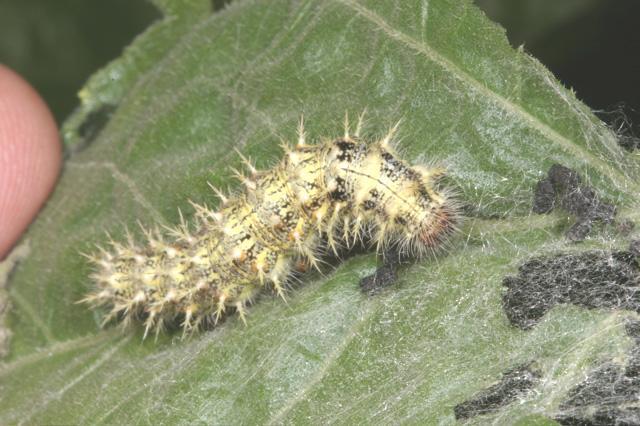Sunflower Insects
The painted lady, or thistle caterpillar, Vanessa cardui (Lepidoptera: Nymphalidae)

Adult butterfly.

Larva of Vanessa cardui on sunflower leaf with frass and webbing.
The painted lady, a close relative of the red admiral (Vanessa atalanta), is a very widely distributed butterfly with many host plants in the families Asteraceae and Malvaceae. The adult butterfly has a somewhat pointed forewing with a distinctive transverse white bar. The intensity of reddish coloration on the wings varies greatly, with some individuals brightly colored and others appearing quite drab. The eggs are green and barrel-shaped. The larvae can be quite variable in appearance and are often called the thistle caterpillar because of their prevalence on thistle plants. They are spiny, covered with bristles, and range in background coloration from mottled, pale green to dark, purplish hues. They feed singly, skeletonizing leaves and tying up silken nests that typically accumulate piles of larval frass.
This butterfly can have two generations per year in Kansas, but it is migratory and overwinters only in the southern United States and Mexico. During summer, loosely-knit swarms migrate northward in search of suitable food plants. When large numbers of adults arrive in sunflower fields there is the potential for substantial defoliation to occur. Eggs are laid singly on the upper surfaces of leaves. Damage is normally confined to individual plants, but when many plants are affected, an effort to estimate percent defoliation in the field may be justified.
Please refer to the most recent Sunflower Insect Management Guide for control options.
Page last updated 10/02/2013 by J.P. Michaud.